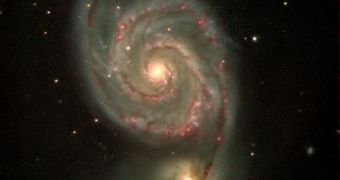It's not the first time - and probably not the last either - when your galaxy commits acts of cannibalism against its smaller companions orbiting around it. Researchers from the Research School of Astronomy at the Australian National University reveal that they have discovered debris of a possible encounter between Milky Way and a dwarf galaxy, when the satellite galaxy was swallowed by our own.
"The stars we have found have been stripped from the Sagittarius dwarf galaxy. The Sagittarius dwarf is a cosmic lightweight weighing 10,000 times less than our Milky Way. It has ventured too close to our galaxy and is now getting stretched out and torn apart," said lead author Dr Stefan Keller.
The remnant debris of the Sagittarius dwarf galaxy are scattered throughout the Milky Way. However, with the help of over 15,000 images of the night sky, Dr Keller and his colleagues discovered a rare type of pulsar, mostly known to astronomers as RR Lyrae variable. Such stars are important for study because they vary their intensity with their volume oscillations, thus providing with an accurate estimation of the distance to them.
By measuring the distance to a series of pulsars in the Milky Way, Dr Keller showed that the debris trail of the Sagittarius dwarf galaxy is located at a distance of about 150,000 light years, much further than previously estimated.
"The new debris patches are particularly exciting as they offer us the best chance to measure the mass and shape of the Milky Way. We know that the Milky Way contains roughly ten times more mass than we can see, suggesting the presence of mysterious dark matter. We can't see the dark matter itself but our study can see the effects of its gravitational pull on the Sagittarius dwarf," explained Dr Keller.
During its early life, the Milky Way galaxy might have merged a number of times with other smaller galaxies. Mergers would have occurred much more often in the past, thus steadily increasing the mass of our galaxy.
"The devouring of the Sagittarius dwarf is like the after dinner mint on top of what has been an extensive banquet for the Milky Way," Keller concluded.

 14 DAY TRIAL //
14 DAY TRIAL //